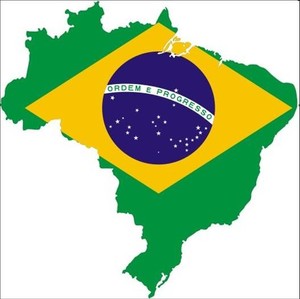Authors Marcos Renato de Assis and Valdair Pinto outline the strengths and weaknesses of the Brazilian regulation on follow-on biologicals and compare regulations in Europe, the US and the world [1].
The regulatory body for approval of medicines in Brazil is the Brazilian Health Surveillance Agency (Agência Nacional de Vigilância Sanitária, ANVISA). The agency follows the key principles established by the World Health Organization (WHO) for the assessment of biosimilarity but allows for some differences due to the specific needs of Brazil, see Table 1.
ANVISA introduced new regulations (Resolution no. 55/2010) to establish specific pathways to license follow-on biological products in December 2010 [2]. The guideline provides two regulatory pathways for follow-on biological products: a comparative pathway and an individual development pathway, see Table 1. This individual development pathway introduces a more permissive approach in which the copy product does not require a full comparison with the original one and a reduced dossier can be presented. The applicant needs to present complete data regarding quality issues but it does not have to be comparative. Therefore, this alternative pathway might approve products with an unknown degree of dissimilarity.
ANVISA has not adopted the WHO recommendation nor the FDA rule on naming, see Table 1. This differentiation, according to the authors, ‘is needed to provide the prescribing physician the option to designate the product to be dispensed and, perhaps more importantly, to ensure the necessary traceability for safety assessments’.
| Table 1: Comparison of Brazilian regulations for follow-on biologicals with EMA, FDA and WHO
|
|
|
Brazil
|
EMA
|
FDA
|
WHO
|
| Name
|
Produto biológico* (Follow-on biological product)
|
Biosimilar
|
Biosimilar
|
Similar biotherapeutic product
|
| Regulatory pathway(s)
|
Two pathways: comparative and individual (standalone) development
|
Only by comparability
|
| Source of regulation
|
Resolution of board of directors of ANVISA (No. 55/2010) in 2010 [2]
|
EMA guidelines developed after legal framework approved by European Parliament in 2003 [3]
|
FDA guidelines developed after BPCI Act passed by American Congress in 2010 [4]
|
Approved by expert committee in 2010 [5]
|
| Biosimilarity
|
Not defined and not required in the individual pathway
|
Defined and required as precondition for approval
|
| Reference product
|
Not required in the individual pathway
|
Defined and required in all cases
|
| Non-clinical & clinical studies
|
In the individual pathway, a unique comparator is not required
|
Detailed guidance Same reference product is required in all comparisons
|
| Interchangeability
|
Not regulated
|
Regulated by Member States
|
Defined by law (BPCI Act) based on scientific criteria
|
Not regulated
|
| Extrapolation
|
Possible with defined criteria
|
| Non-proprietary names
|
No rule; same names for reference and all biosimilars
|
Possible disambiguation through manufacturer identification
|
Final rules in place with core name and suffix [6]
|
Biological Qualifier with suffix [7]
|
| BPCI Act: Biologics Price Competition and Innovation Act of 2009 (BPCI Act),
|
Interchangeability of indications for follow-on biologicals is also not regulated in Brazil. This, according to de Assis and Pinto, gives rise to pressures on physicians and conflicts of interest in the decision-making on the use of follow-on biologicals.
The authors conclude that ‘the directive for licensing biosimilars published by the Brazilian Regulatory Agency in 2010 is very much aligned with the principles seen on the WHO norms and standards for the evaluation of similar biotherapeutic products. However, it includes some controversial changes such as nomenclature (naming the copies as produto biológico, avoiding the use of the term biosimilar), and the addition of an alternative pathway of approval not based on the comparability exercise.
The authors therefore suggest that ANVISA revise its regulation and designate approved copies of biologicals as biosimilars after the comparability exercise. Finally, they add that ‘The development of biosimilars backed by proper regulation can provide cost savings while also preserving clinical effectiveness and safety for patients’.
Conflict of interest
The authors of the research paper [1] reported conflict of interest, including having given lectures and/or consultancy to various pharmaceutical companies. For full details of the authors’ conflict of interest, see the research paper [1].
Related article
Brazilian oncologists favour ‘follow-on biological products’
References
1. de Assis MR, Pinto V. Strengths and weaknesses of the Brazilian regulation on biosimilars: a critical view of the regulatory requirements for biosimilars in Brazil. Ther Adv Musculoskelet Dis. 2018;10(12):253-9.
2. GaBI Online - Generics and Biosimilars Initiative. Brazilian guidelines for follow-on biological products [www.gabionline.net]. Mol, Belgium: Pro Pharma Communications International; [cited 2019 Mar 15]. Available from: www.gabionline.net/Guidelines/Brazilian-guidelines-for-follow-on-biological-products
3. GaBI Online - Generics and Biosimilars Initiative. EU guidelines for biosimilars [www.gabionline.net]. Mol, Belgium: Pro Pharma Communications International; [cited 2019 Mar 15]. Available from: www.gabionline.net/Guidelines/EU-guidelines-for-biosimilars
4. GaBI Online - Generics and Biosimilars Initiative. US guidelines for biosimilars [www.gabionline.net]. Mol, Belgium: Pro Pharma Communications International; [cited 2019 Mar 15]. Available from: www.gabionline.net/Guidelines/US-guidelines-for-biosimilars
5. GaBI Online - Generics and Biosimilars Initiative. Global guidelines for biosimilars [www.gabionline.net]. Mol, Belgium: Pro Pharma Communications International; [cited 2019 Mar 15]. Available from: www.gabionline.net/Guidelines/Global-guidelines-for-biosimilars
6. GaBI Online - Generics and Biosimilars Initiative. FDA approach to prospectively naming biologicals [www.gabionline.net]. Mol, Belgium: Pro Pharma Communications International; [cited 2019 Mar 15]. Available from: www.gabionline.net/Reports/FDA-approach-to-prospectively-naming-biologicals
7. GaBI Online - Generics and Biosimilars Initiative. WHO issues draft proposal for its biological qualifier [www.gabionline.net]. Mol, Belgium: Pro Pharma Communications International; [cited 2019 Mar 15]. Available from: www.gabionline.net/Policies-Legislation/WHO-issues-draft-proposal-for-its-biological-qualifier
Permission granted to reproduce for personal and non-commercial use only. All other reproduction, copy or reprinting of all or part of any ‘Content’ found on this website is strictly prohibited without the prior consent of the publisher. Contact the publisher to obtain permission before redistributing.
Copyright – Unless otherwise stated all contents of this website are © 2019 Pro Pharma Communications International. All Rights Reserved.








 0
0











Post your comment